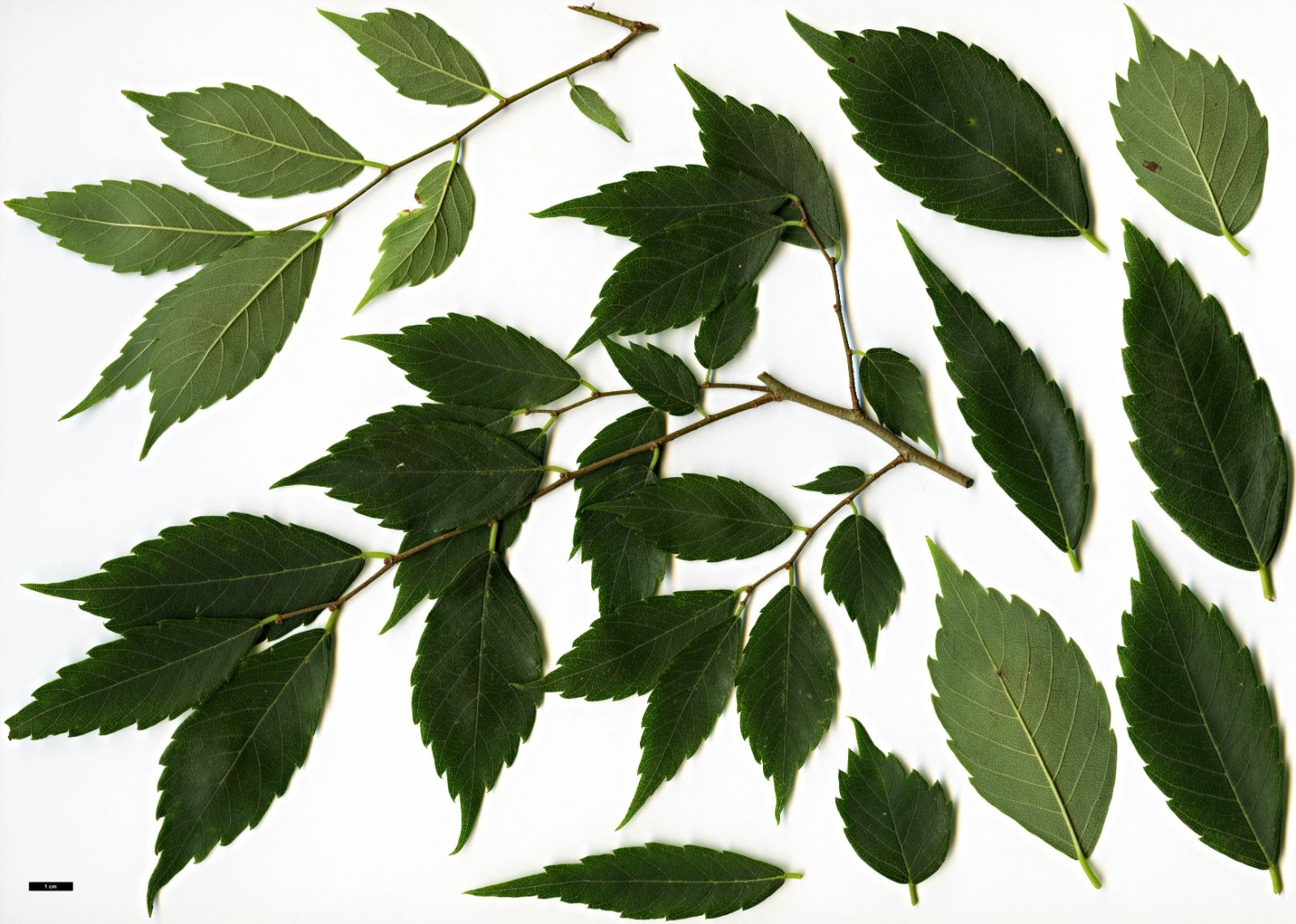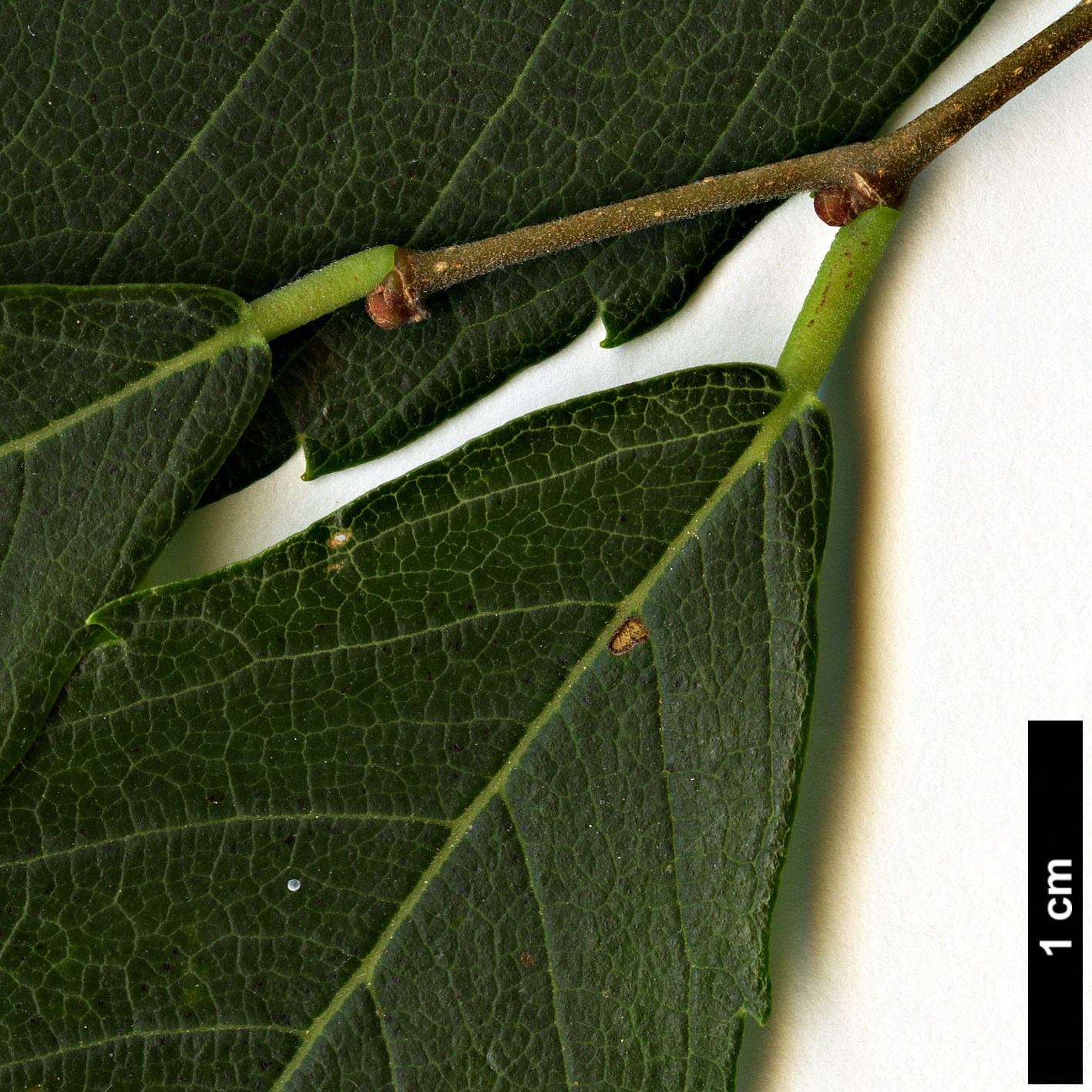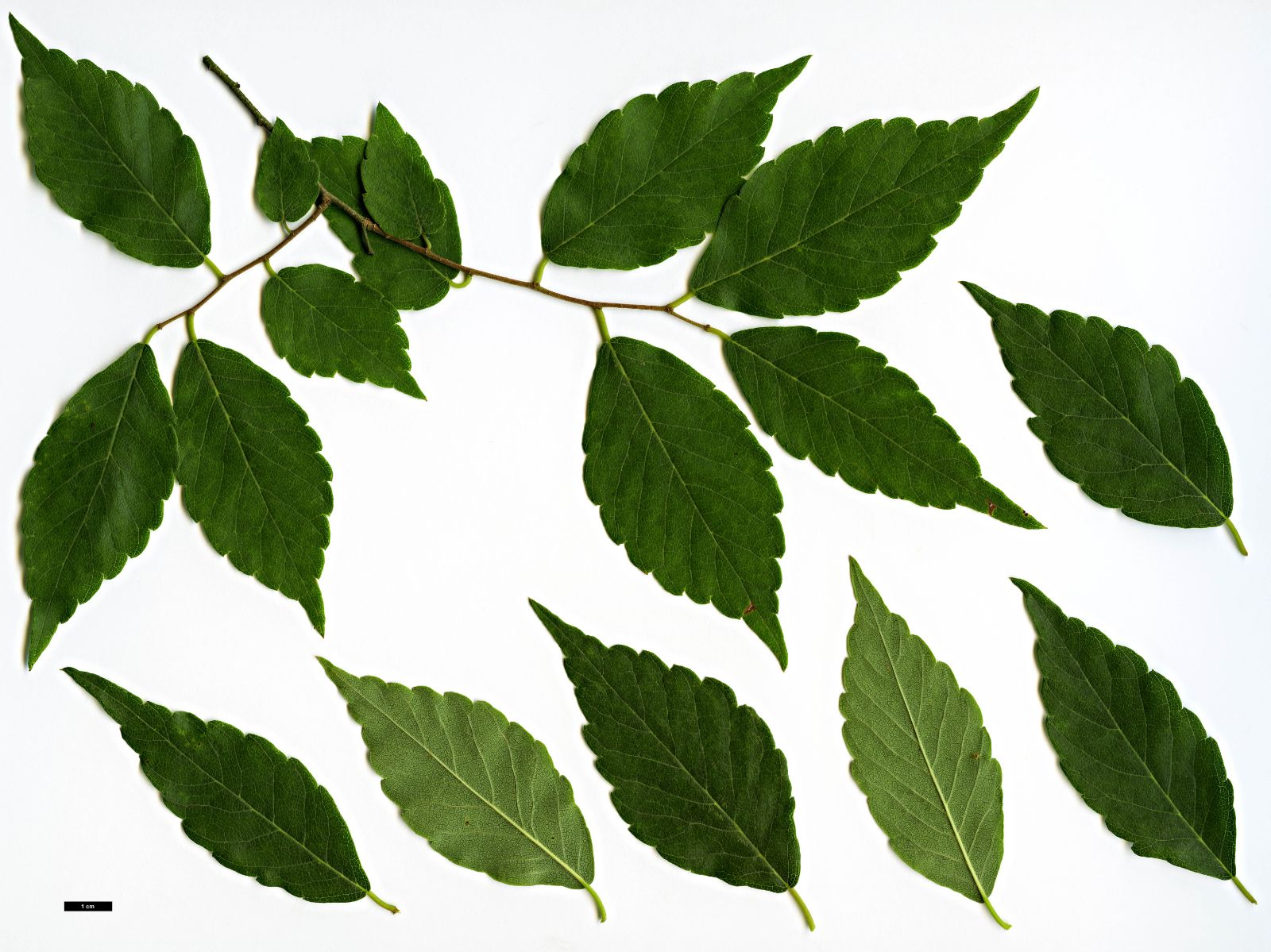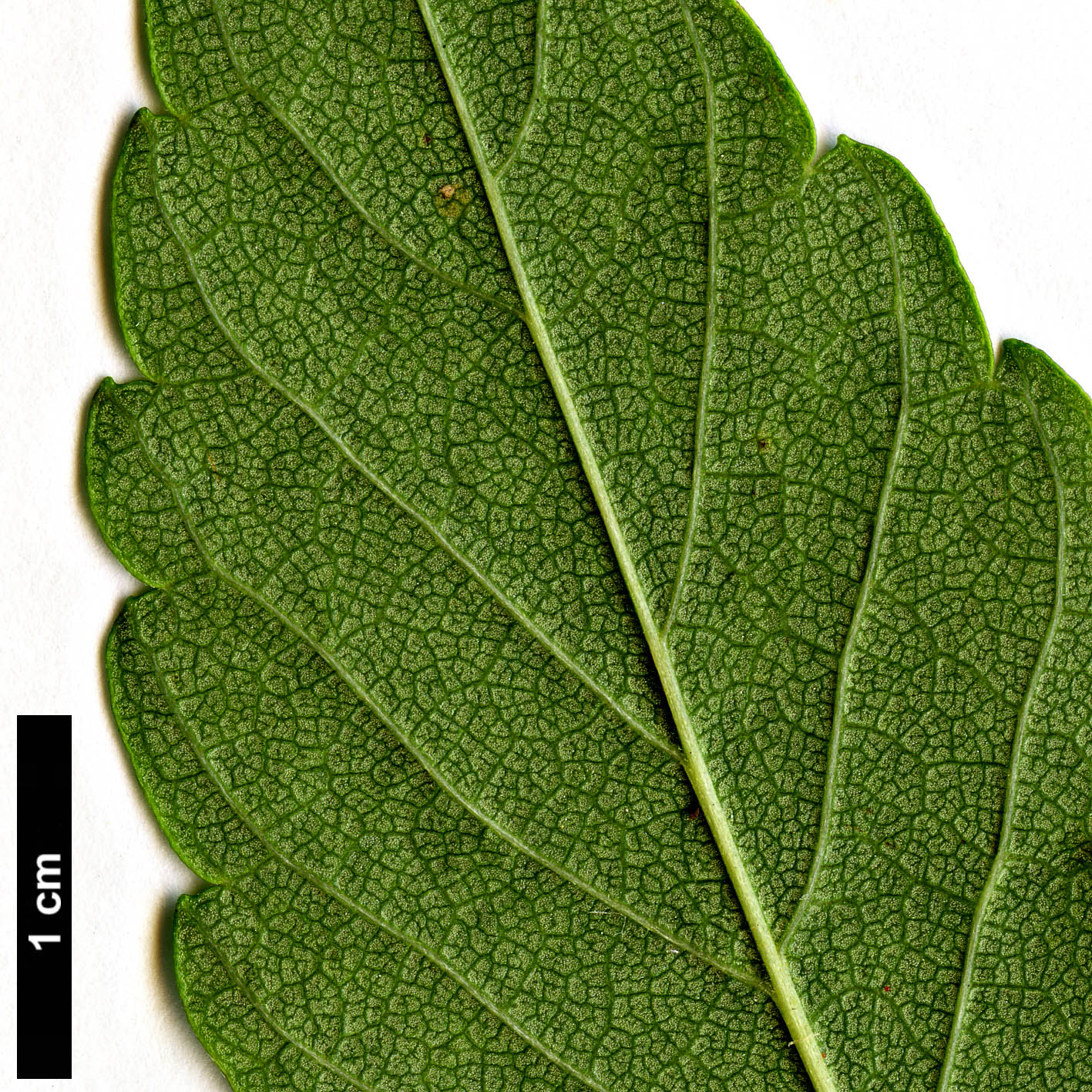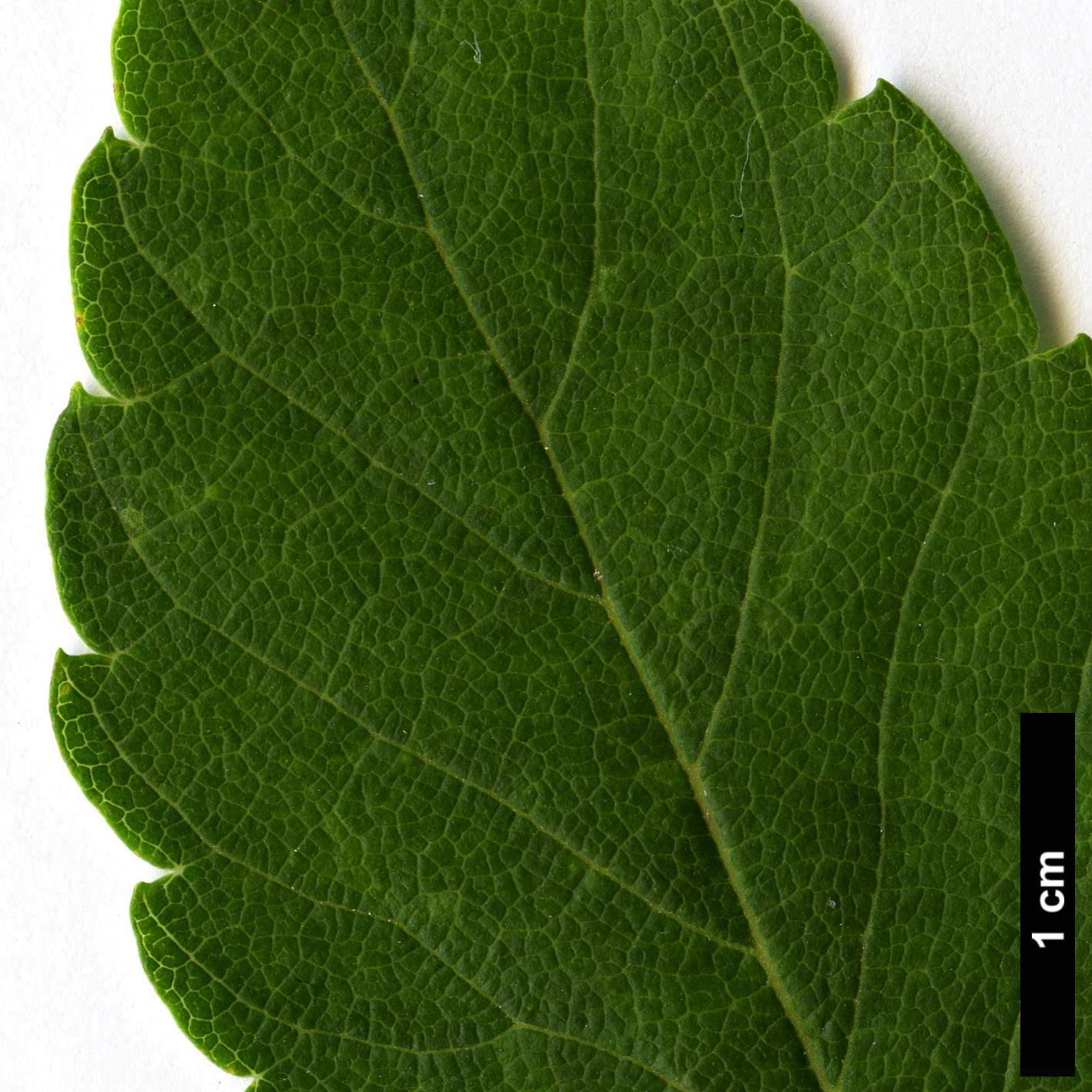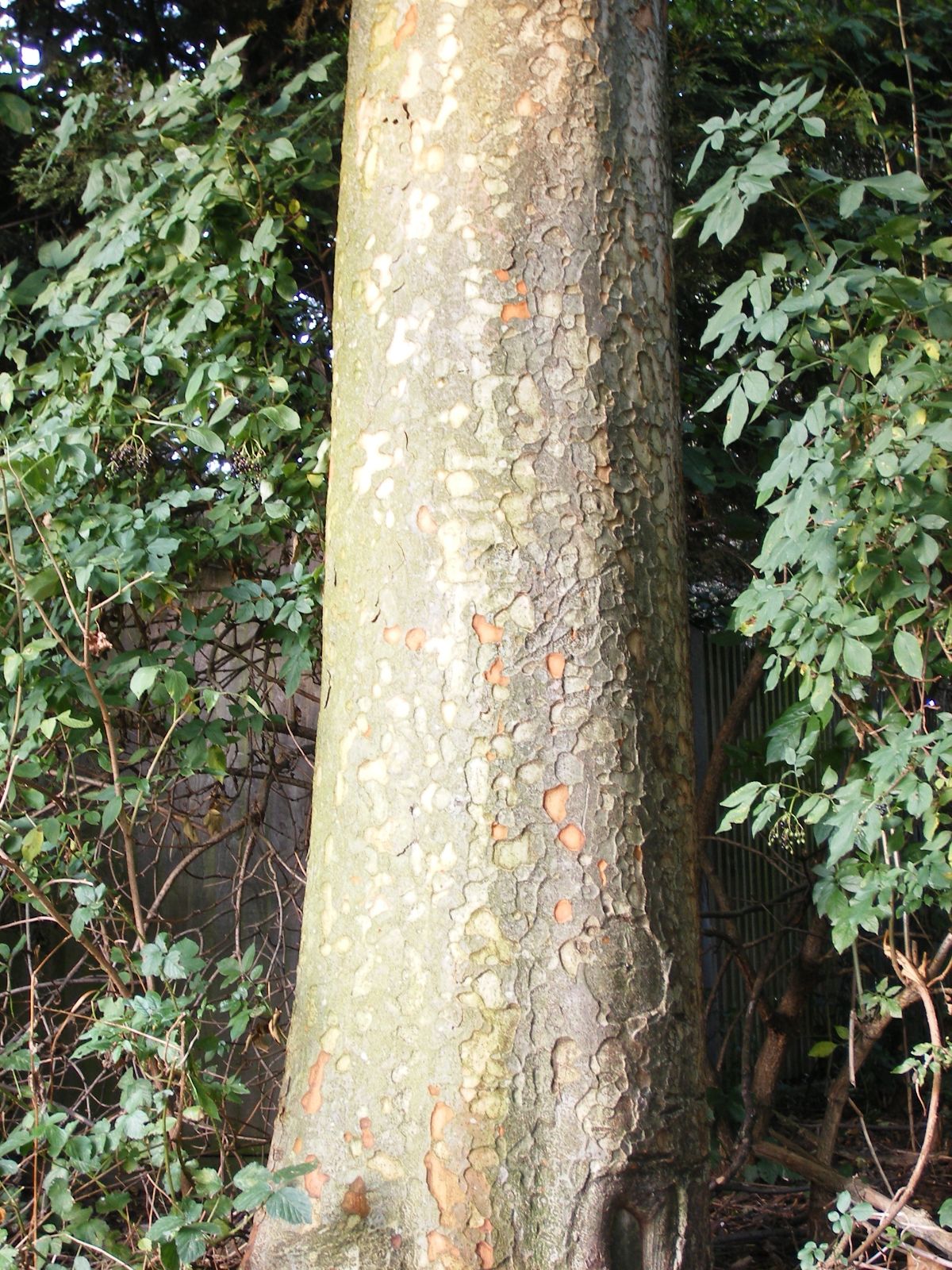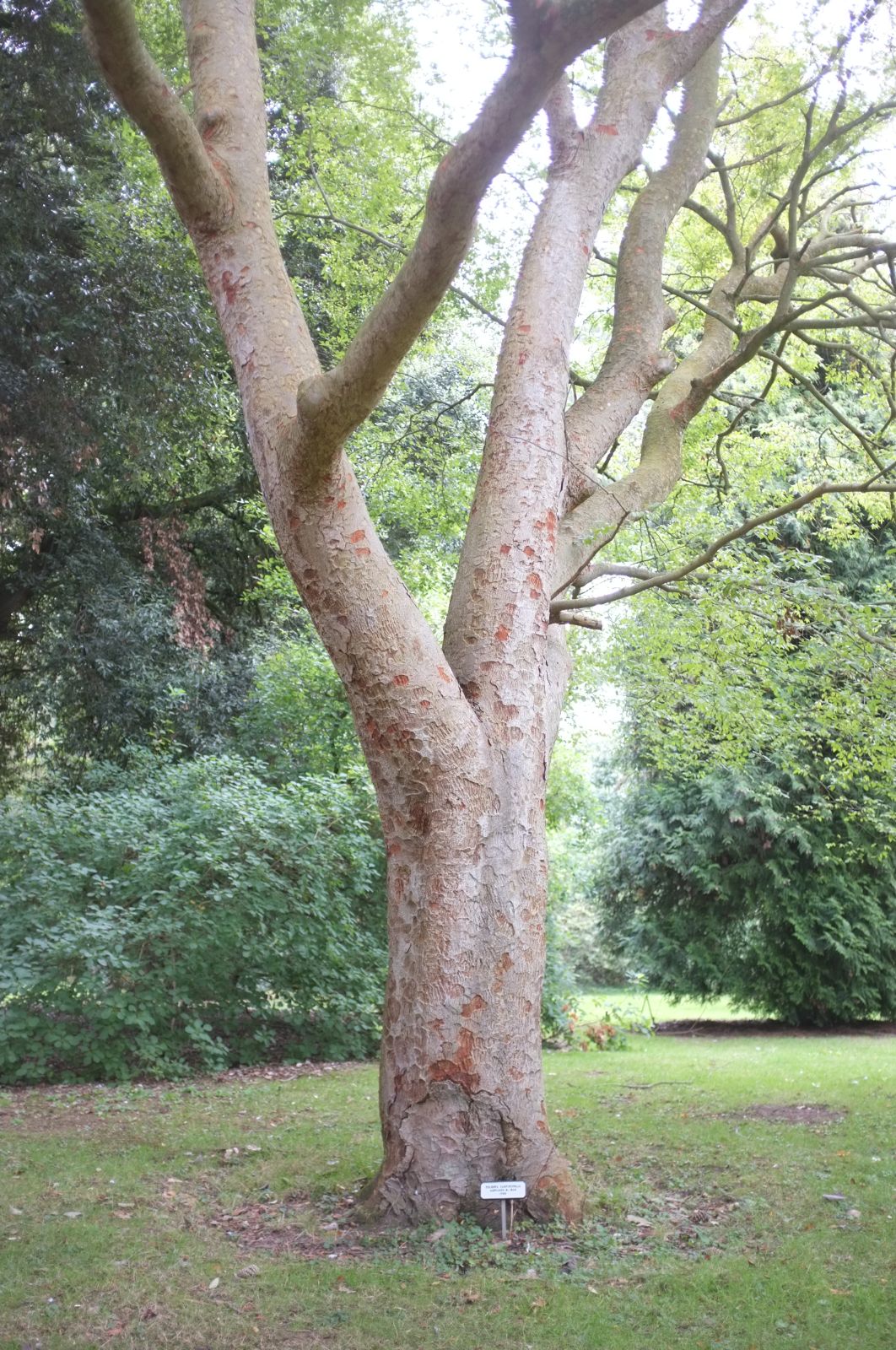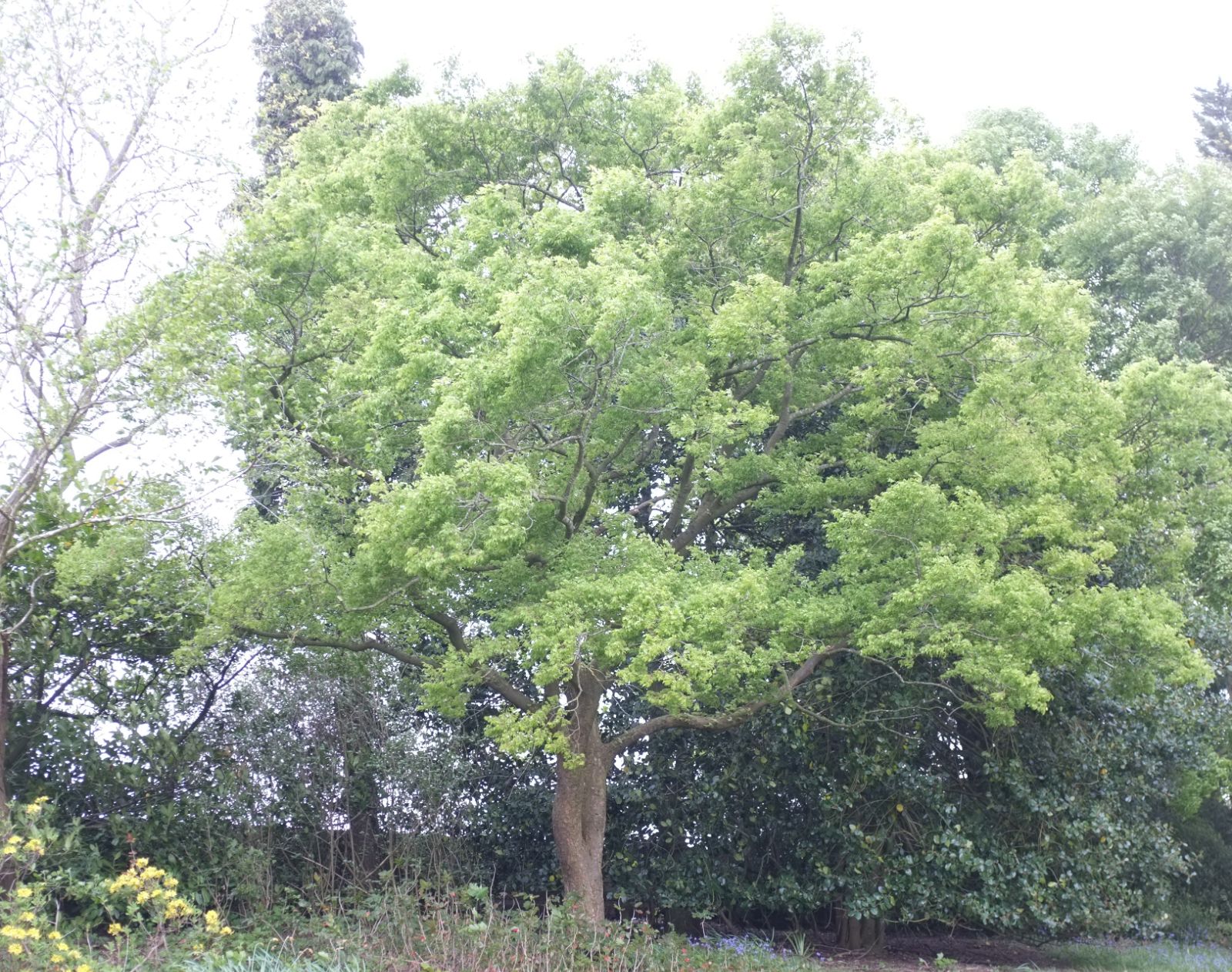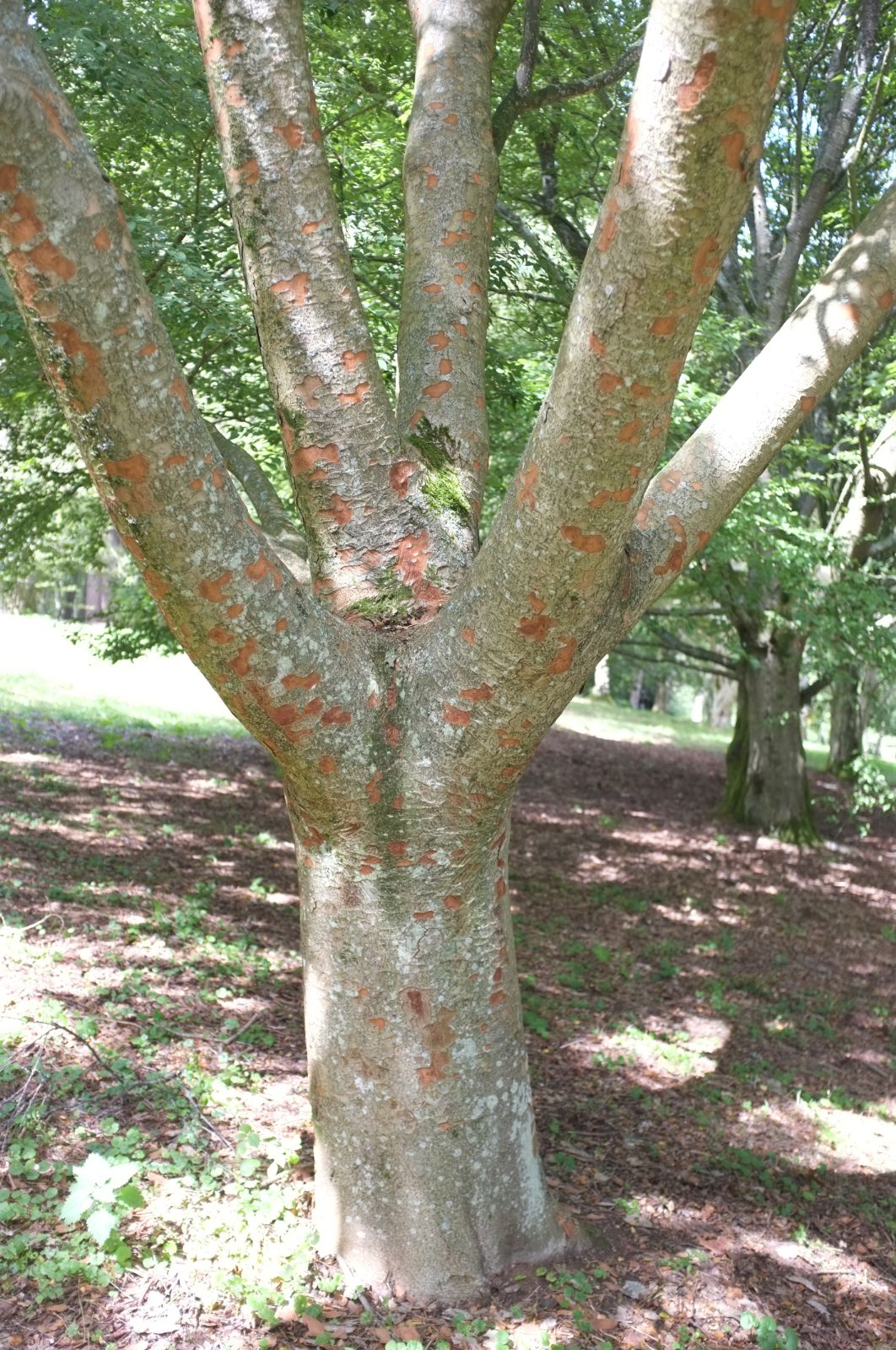Zelkova sinica
Sponsor
Kindly sponsored by
Francine: 'after many informative Tours and Study Days with the IDS I feel it only fitting to help and promote such a wonderful organisation'
Credits
Owen Johnson (2023)
Recommended citation
Johnson, O. (2023), 'Zelkova sinica' from the website Trees and Shrubs Online (treesandshrubsonline.
Genus
Common Names
- Chinese Zelkova
- 大果榉 (da guo ju)
Synonyms
- Zelkova sinica var. australis Hand.-Mazz.
Infraspecifics
A large tree, to 30 m. Bark pale grey, smooth at first then flaking in many shallow scales to show the yellow to red underbark. Twigs slender, variably grey-pubescent; buds globose to ovoid, not pointed. Leaf (2–)3–6(–8) × (1–) 2–3 (–4) cm, ovate to elliptic, base rounded to broadly cuneate, apex acuminate (rarely acute); 6–10(–12) major veins each side each terminating in a large round-shouldered tooth which may be apiculate; variably harsh to the touch above and glabrous to slightly downy under the veins; flushing pinkish; petiole pubescent, 2–5(–10) mm long. Drupe large (5–7 mm wide), smooth surfaced, ripening early (August–September in China). (Fu, Xin & Whittemore 2003; Bean 1981).
Distribution China Gansu, Hebei, Henan, NW Hubei, Shaanxi, S Shanxi, N Sichuan
Habitat Near rivers in mountain forests, 800–2500 m.
USDA Hardiness Zone 5
RHS Hardiness Rating H6
Conservation status Vulnerable (VU)
Zelkova sinica is distinguished from the other two east Asian species by its larger (>5 mm diameter) smooth fruit which ripen earlier in autumn; in the (frequent) absence of fruit, it can generally be distinguished by its tiny winter buds which are often rounded and never pointed, and by its leaves which tend to have slightly fewer pairs of major veins and teeth and are often more tapered towards the base. Like most zelkovas its bark flakes in shallow scales to show the brighty coloured underbark and, in cultivated trees at least, it tends to be the most colourful that can be seen in this genus.
This species has a more limited distribution within China than Zelkova serrata or Z. schneideriana; it is endemic to the warmer, central provinces, where an estimated 4000 mature trees survive within about 50 subpopulations (Kozlowski et al. 2018). Like other zelkovas it tends to grow in fertile and often alkaline soils. Its timber is much used in China for cabinet-making (Liu et al. 2021); in its native country it is also a popular ornamental subject (Liu et al. 2013).
Its inland distribution means that Zelkova sinica was slow to be discovered by western botanists. Ernest Wilson found it in western Hubei in 1907 and sent seed to the Arnold Arboretum (Sargent 1913). (Wilson was of the opinion that a second seed consignment sent by Frank Meyer from Jiangsu in 1908, and a herbarium specimen collected in Zhejiang as early as the 1870s by Francis Forbes, also represented Z. sinica (Sargent 1913), but modern botanists are agreed that these will have been Z. serrata.) Wilson’s original tree at the Arnold Arboretum has gone, but a surviving specimen here, obtained in 1920 from Vilmorin’s nursery in France, seems likely to have originated from the same seed consignment (Arnold Arboretum 2023). Another tree purchased from Vilmorin in 1920 survives in the collection at the Royal Botanic Gardens, Kew, England, and has grown more vigorously, reaching 19 m × 87 cm dbh by 2022 (Tree Register 2023).
Zelkova sinica was also collected in 1920 by Joseph Hers; the Arnold Arboretum has a specimen grown from this seed, plus a scion of another tree (since lost) which grew at the Morton Arboretum in Illinois (Arnold Arboretum 2023; Morton Arboretum 2023). Other good American examples are at the Morris Arboretum in Pennsylvania and the J.C. Raulston Arboretum in North Carolina; despite its southerly origins, Z. sinica is hardy enough to survive at the University of Maine campus at Orono (North American Climate Zone 5a; Dirr 2009). In the UK, it is quite widely grown but seldom luxuriates as well as Z. serrata, and has a higher failure rate. There is a multi-stemmed example 13 m tall as far north as the Royal Botanic Garden Edinburgh, and Z. sinica thrives at Stanmer Park in East Sussex when planted in the thinnest and most reactive of chalky soils (Tree Register 2023). There is a large and handsome example in the Rome Botanical Garden, Italy.
Lacking the vigour and stature – particularly in the climate of the eastern United States – of Zelkova serrata, this Chinese endemic has lost out in competition as an ornamental tree. But is a species that is certainly worth growing for its beauty, as well as for its increasing scarcity in the wild.
'Discoverer'
A selection sold in the United States by Blue Heron Farm, Oregon, with a uniform habit and orange autumn colour (Blue Heron Farm 2023). The nursery calls the species ‘Korean Zelkova’, which might invite some doubts since only Zelkova serrata is native in Korea, but its foliage features certainly seem to fit Z. sinica better.

